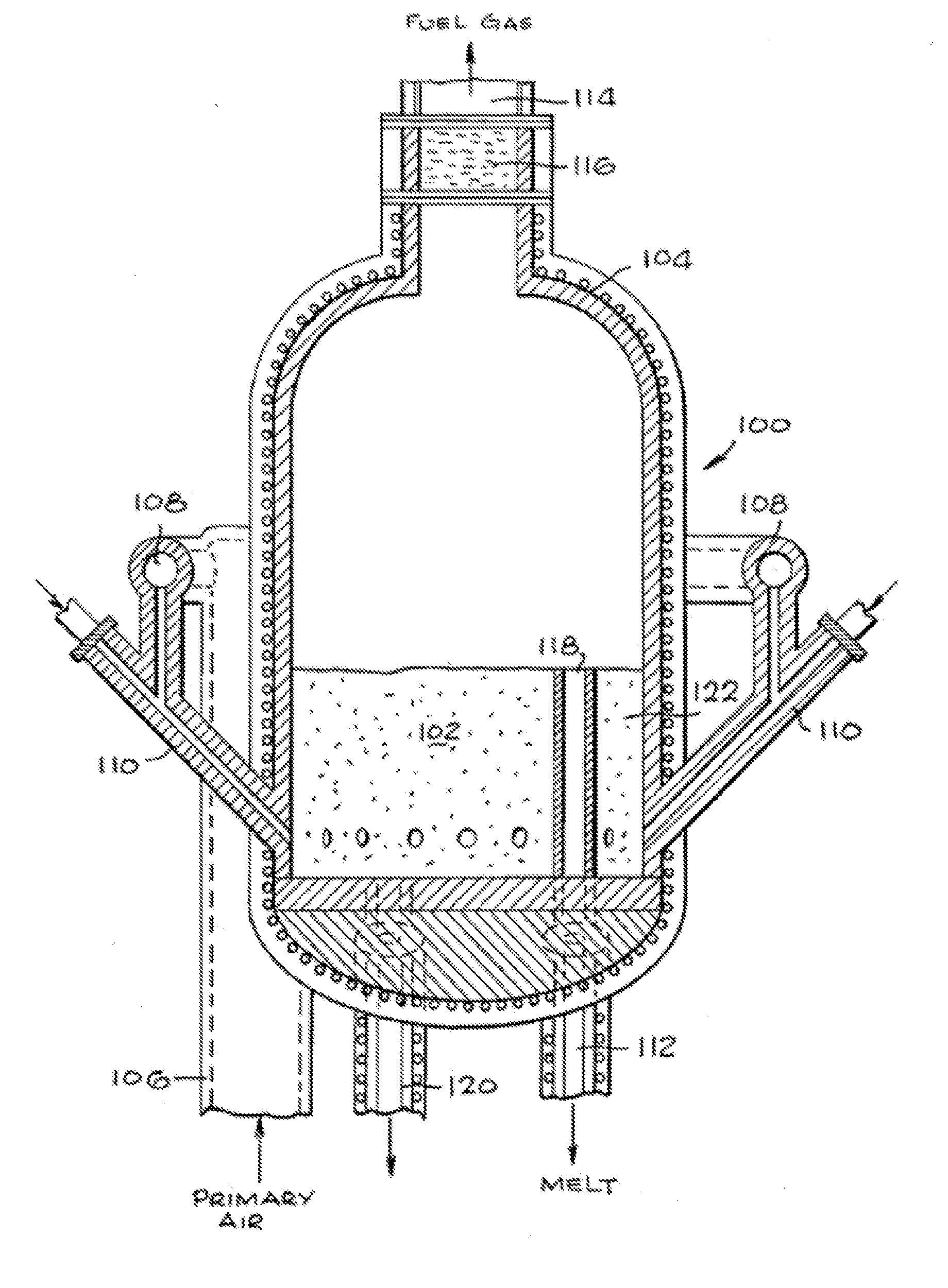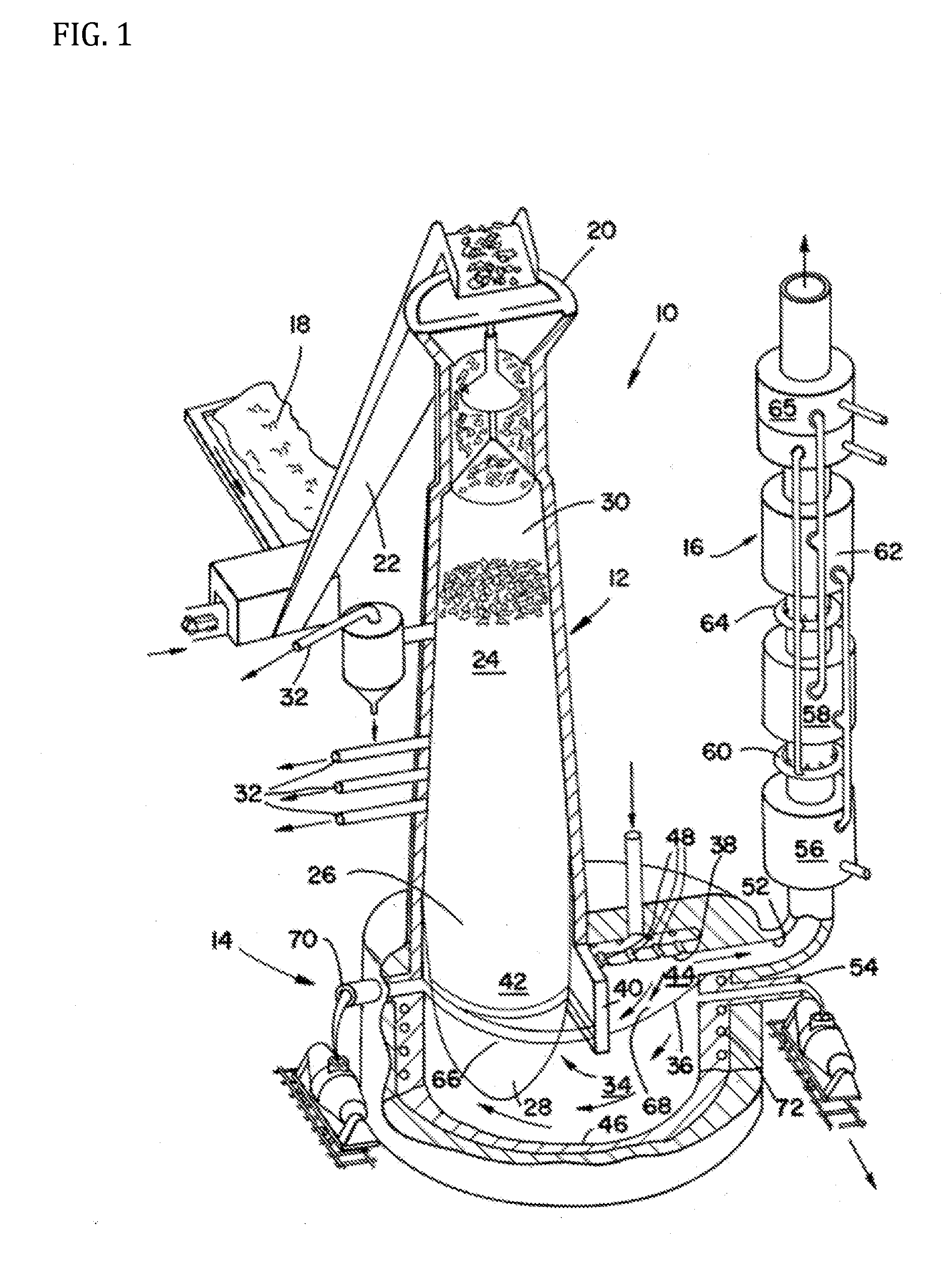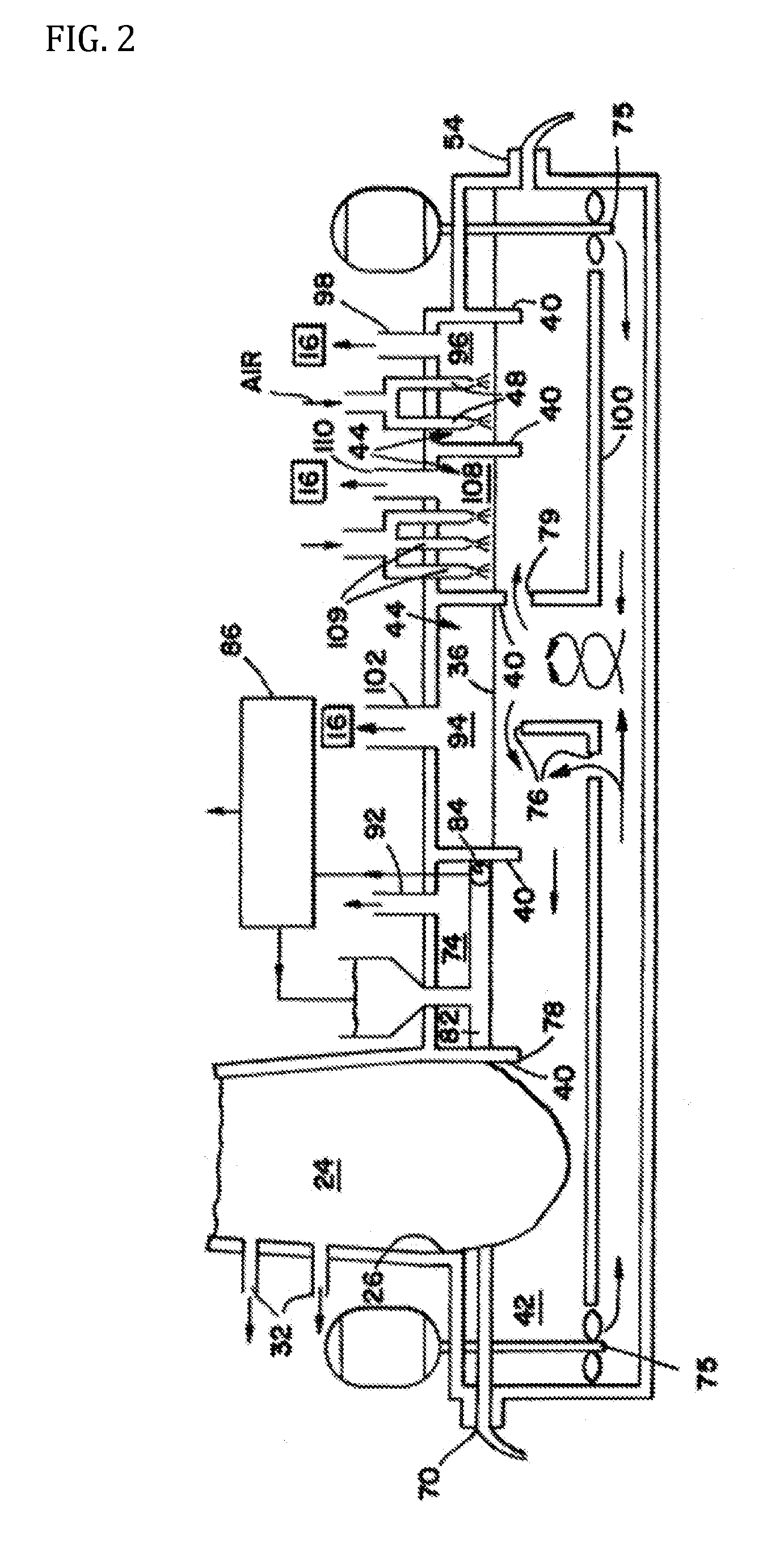Melt gasifier system
a gasifier and melt technology, applied in the direction of gasification process details, gas contaminants removal, inorganic chemistry, etc., can solve the problems of high energy consumption of gasifying agent generated electric power in an auxiliary facility including an oxygen plant, and the inability to filter fumes of incinerators which have proved unsatisfactory,
- Summary
- Abstract
- Description
- Claims
- Application Information
AI Technical Summary
Benefits of technology
Problems solved by technology
Method used
Image
Examples
example 2
[0164]Referring now particularly to FIG. 2, there is illustrated therein a known embodiment implemented according to the present specification wherein the baffle means 40 defines in addition to the carbonization chamber 42 and the oxidation chamber means 44, a leaching chamber 74 for sulfur removal. The baffle means 40 serves to separate the leaching chamber 74 above the liquid level 36 from the carbonization chamber 42 and the oxidation chamber means 44, but allows flow of the liquid 34, for example, under the influence of mechanical stirrers 75, into the leaching chamber 74 from the carburization chamber 42 and out of the leaching chamber 74 and into the oxidation chamber means 44. Thus, liquid 34 which has both carbon and sulfur dissolved therein can enter the leaching chamber 74 via entrance means 76 and can leave the leaching chamber 74 via exit means 78 and can enter the oxidation chamber means 44 via oxidation entrance means 79.
[0165]A high basicity mixture of metal oxides is...
example 3
[0171]It is an object of this known example to provide an improved process for generating a low BTU gas from carbonaceous material. It is yet another object of the present specification to provide a process for heat generation from carbonaceous materials which obviates removal of pollutants formed in the combustion reaction. A particular object of the present specification is the provision of a process for partial oxidation of a carbonaceous material in a molten alkali metal salt medium for production of a gaseous effluent containing a high proportion of combustible gases, particularly carbon monoxide and hydrogen, such gaseous effluent then being adapted for further and complete combustion in a secondary reaction zone or combustor, to utilize the heat value of the gas.
[0172]In accordance with the broad aspects of the present specification, a carbonaceous material such as coal or a combustible waste material is introduced, together with a source of oxygen, suitably and preferably ai...
example 4
[0184]In this embodiment of a known bath gasifier configuration implemented according to the present specification, there is provided an apparatus for gasification of carbon (C) in the form of carbon, hydrocarbons and / or hydrocarbon compounds, comprising a reactor in which injection of carbon, oxygen gas and iron oxides takes place under the surface of the iron melt, and in which carbon is injected in stoichiometric excess in relation to the amount of oxygen in the form of oxide compounds in the melt, the reactor having a total inner pressure exceeding atmospheric pressure. The present specification is further characterized in that an exhaust gas pipe from the reactor is closely attached to a cooling device, which together with the reactor forms a sealed unit and in that a regulating valve for controlling and maintaining overpressure in the said unit is placed on the cold side of the cooling device.
[0185]FIG. 4 shows a reactor 1, lined and provided with a steel mantle, which during ...
PUM
| Property | Measurement | Unit |
|---|---|---|
| tilt angle | aaaaa | aaaaa |
| superficial gas velocity | aaaaa | aaaaa |
| superficial gas velocity | aaaaa | aaaaa |
Abstract
Description
Claims
Application Information
 Login to View More
Login to View More - R&D
- Intellectual Property
- Life Sciences
- Materials
- Tech Scout
- Unparalleled Data Quality
- Higher Quality Content
- 60% Fewer Hallucinations
Browse by: Latest US Patents, China's latest patents, Technical Efficacy Thesaurus, Application Domain, Technology Topic, Popular Technical Reports.
© 2025 PatSnap. All rights reserved.Legal|Privacy policy|Modern Slavery Act Transparency Statement|Sitemap|About US| Contact US: help@patsnap.com



